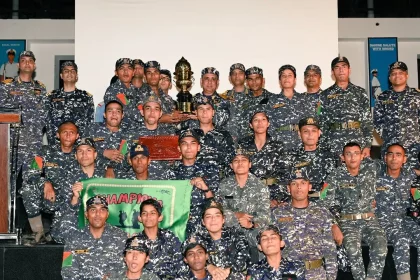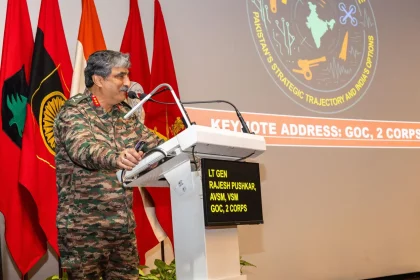BRO Builds World’s Highest Motorable Road in Leh, Surpassing Its Own Guinness World Record
Mig La Pass Road at 19,400 ft Sets New World Record, Strengthens Border Connectivity.
Lt Gen Vikas Rohella Assumes Charge as Engineer-in-Chief of Indian Army
Veteran Engineer Officer Takes Helm to Lead Corps into a New Era of Technological Excellence.
BSF Holds Flag-In Ceremony for Alpine Training & Mountaineering Expedition 2025
DG BSF lauds mountaineering team, announces ₹5 lakh reward and modern training facilities.
Cheetah Squadron Emerges Victorious at Camp Barracuda as Cadets Conquer Challenges at INA
Together, these experiences forged not just naval cadets but future leaders of the seas ready to uphold the traditions and…
Lt Gen Rajesh Pushkar Leads Strategic Deliberations on Pakistan’s Trajectory and India’s Options
Discussions revolved around Pakistan’s evolving nuclear posture, cross-border proxy strategies, geopolitical alignments, and the broader implications for regional stability.
Air Marshal Hardeep Bains Takes Charge as Air Officer-in-Charge Personnel
His appointment as AOP underscores the IAF’s continued focus on personnel welfare, operational readiness, and leadership development as it evolves…






